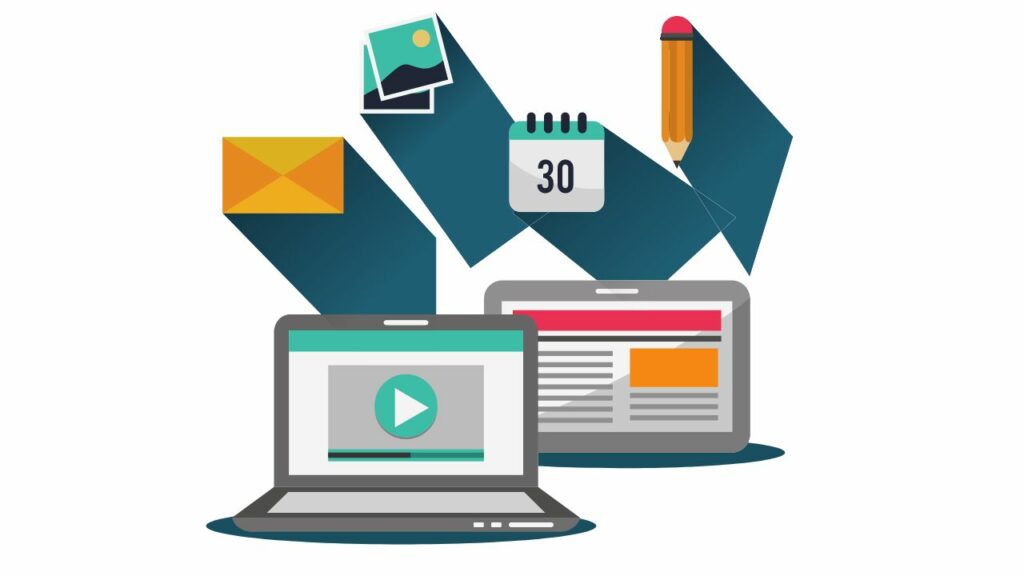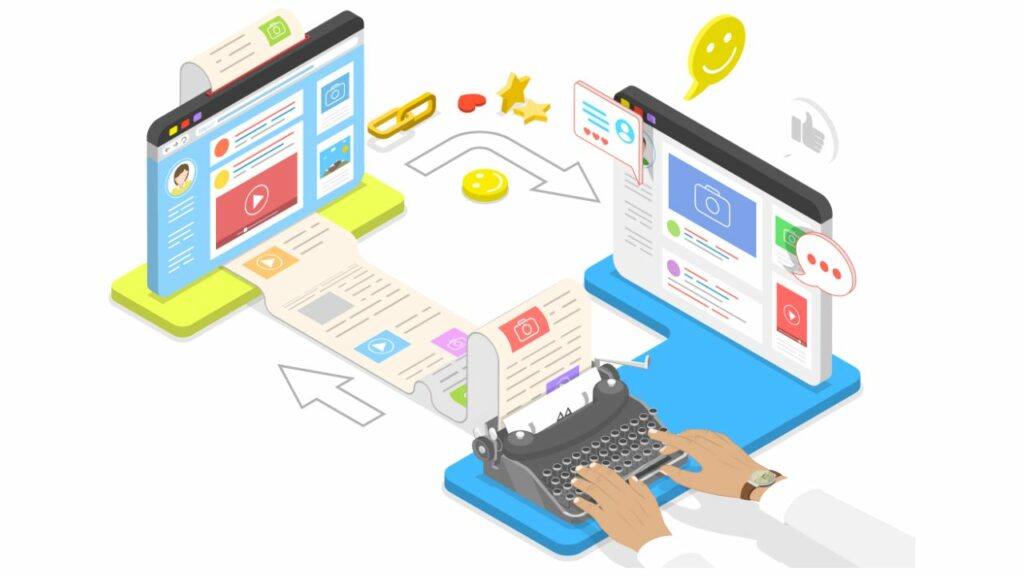Creating a blog series is a powerful way to engage your audience and establish yourself as an expert in your field. Whether you are a seasoned blogger or just starting out, a well-executed blog series can attract new readers, increase traffic to your website, and build a loyal following. In this article, we will guide you through the process of creating a blog series from start to finish. From choosing the right topic to structuring your posts and promoting your series, we will provide you with practical tips and strategies to ensure the success of your blog series. So, if you’re ready to take your blogging game to the next level, let’s dive in and learn how to create a captivating and impactful blog series.
What is a blog series?

A blog series is a collection of related blog posts published over time, usually with a specific theme or topic in mind. Instead of writing a single standalone blog post, a blog series allows you to explore a subject in more depth and provide your readers with a comprehensive and cohesive narrative.
Each blog post in a series builds upon the previous one, creating a sense of continuity and progression. The series can be structured in various ways, such as a step-by-step guide, a storytelling format, or a series of informative articles. The length and frequency of the posts can also vary depending on the topic and your publishing schedule.
By creating a blog series, you can engage your audience over an extended period, keep them coming back for more, and encourage them to explore different aspects of a particular subject. It also allows you to demonstrate your expertise and showcase your knowledge on a specific topic, positioning yourself as a trusted authority in your niche.
Here’s an example of a blog series called “Mastering Digital Photography: A Step-by-Step Guide”:
- Blog Post 1: Introduction to Digital Photography
- This post introduces the series and covers the basics of digital photography, including camera types, settings, and terminology.
- Blog Post 2: Understanding Exposure
- This post delves into the concept of exposure, discussing aperture, shutter speed, and ISO. It provides practical tips on how to achieve proper exposure in different lighting conditions.
- Blog Post 3: Composition Techniques
- This post explores various composition techniques, such as the rule of thirds, leading lines, and framing. It offers insights on how to compose visually appealing photographs.
- Blog Post 4: Mastering Light and Color
- This post focuses on the importance of light and color in photography. It covers topics like natural light, artificial lighting, white balance, and color theory.
- Blog Post 5: Exploring Different Genres of Photography
- This post highlights various genres of photography, such as landscape, portrait, street, and wildlife photography. It provides tips and insights specific to each genre.
- Blog Post 6: Post-Processing and Editing
- This post discusses the post-processing stage of digital photography, including editing techniques, software recommendations, and tips for enhancing your images.
- Blog Post 7: Building Your Photography Portfolio
- This final post focuses on creating a compelling photography portfolio. It covers selecting and organizing your best images, showcasing your work online, and attracting clients or viewers.
This blog series provides a comprehensive guide for beginners or enthusiasts looking to improve their digital photography skills. Each post builds upon the previous one, offering valuable information and practical tips to help readers master the art of digital photography.
Overall, a blog series offers a strategic approach to content creation, enabling you to provide valuable and in-depth information to your readers while increasing engagement and establishing your brand.
Benefits of a Blog Series

There are several benefits to creating a blog series:
- Increased Engagement: A blog series encourages readers to stay engaged with your content over an extended period. By providing a continuous narrative or in-depth exploration of a topic, you can keep your audience coming back for more and increase their overall engagement with your blog.
- Establishing Authority: A well-executed blog series allows you to showcase your expertise and establish yourself as an authority in your niche. By providing valuable and comprehensive information on a specific topic, you build trust with your readers and position yourself as a go-to resource.
- Improved SEO: A blog series can positively impact your search engine optimization (SEO). When you write multiple posts on a related topic, you can optimize each post for specific keywords and link them together. This interlinking helps search engines understand the relevance and depth of your content, potentially improving your rankings in search results.
- Audience Growth: A compelling blog series has the potential to attract new readers and expand your audience. When readers find value in your series, they are more likely to share it with others, increasing your reach and exposure to new audiences.
- Content Repurposing: A blog series provides a wealth of content that can be repurposed in various ways. You can compile the posts into an e-book, create a podcast or video series based on the content, or use the series as a foundation for a workshop or webinar. Repurposing your blog series allows you to extend its lifespan and reach a wider audience.
- Increased Social Media Engagement: A blog series can generate more social media engagement as readers are more likely to share multiple posts from a series rather than just a single blog post. This can lead to increased visibility, discussions, and interactions on social media platforms.
- Long-Term Value: Unlike standalone blog posts that may lose relevance over time, a blog series has long-term value. Readers can refer back to previous posts in the series, and you can continue to promote and repurpose the series even after it has been completed, providing ongoing value to your audience.
Overall, a blog series offers numerous benefits, including increased engagement, authority establishment, improved SEO, audience growth, content repurposing opportunities, increased social media engagement, and long-term value for both you and your readers.
Types of Blog Series

There are various types of blog series that you can create based on your niche, audience, and content goals. Here are a few examples:
- How-to Guides: A series of blog posts that provide step-by-step instructions on a specific topic or skill. Each post can focus on a different aspect or level of difficulty, allowing readers to learn and master the subject gradually.
- Case Studies: A series that examines real-life examples or case studies related to your niche. Each post can analyze a different case, discussing the problem, solution, and outcomes. This type of series can provide your readers with valuable insights and practical applications.
- Product or Service Reviews: A series of blog posts that reviews different products or services within your niche. Each post can focus on a specific product, providing an in-depth analysis, pros and cons, and recommendations. This type of series can help your readers make informed purchasing decisions.
- Expert Interviews: A series of interviews with your niche’s industry experts or thought leaders. Each post can feature a different interview, covering a range of topics and perspectives. This type of series allows you to tap into the knowledge and insights of influential individuals, providing valuable content for your readers.
- Seasonal or Holiday Themes: A series of blog posts that align with specific seasons or holidays. Each post can explore different aspects, traditions, or tips related to the season or holiday. This type of series can help you create timely and relevant content that resonates with your audience.
- Behind-the-Scenes: A series that offers a behind-the-scenes look at your business, organization, or creative process. Each post can focus on a different aspect, such as team members, production processes, or events. This type of series can help humanize your brand and build a connection with your audience.
- Success Stories: A series that showcases success stories or achievements related to your niche. Each post can feature a different individual or organization, highlighting their journey, challenges, and accomplishments. This type of series can inspire and motivate your readers.
Remember, the type of blog series you choose should align with your audience’s interests, your expertise, and your content goals. Consider what type of series will provide your readers with the most value and engagement while showcasing your expertise and unique perspective.
Organizing a Blog Series

Organizing a blog series effectively is crucial for providing your readers a seamless and engaging experience. Here are some steps to help you organize your blog series:
- Choose a Clear and Cohesive Topic: Select a specific and focused topic. Make sure it aligns with your niche and audience’s interests. Having a clear topic will help you create a series that flows logically and keeps readers engaged.
- Plan the Series Structure: Determine the number of posts in your series and the order in which they will be published. Consider the logical progression of the content and how each post will build upon the previous one. This will help you create a cohesive narrative or learning experience for your readers.
- Create an Outline: Develop an outline for each post in your series. Outline the main points, subtopics, and key takeaways you want to cover in each post. This will serve as a roadmap for writing and ensure that each post contributes to the overall theme of the series.
- Interlink the Posts: Include internal links within each post to connect them to the rest of the series. This will allow readers to navigate between the posts and access the entire series easily. Additionally, interlinking helps search engines understand the relationship between the posts and can improve SEO.
- Use Clear and Consistent Titles: Give each post in your series a clear and descriptive title that indicates its place within the series. Consider using a consistent format or structure for the titles to make it easy for readers to identify the series and understand the order of the posts.
- Provide a Series Introduction: Start the series with an introductory post that explains the purpose, scope, and goals of the series. This will set the stage for what readers can expect and help them understand the value they will gain from following the series.
- Promote and Share the Series: Actively promote and share each post in the series through your blog, social media, email newsletters, and other relevant channels. Encourage readers to subscribe to the series or follow along to ensure they don’t miss any posts.
- Collect Feedback and Engage with Readers: Encourage readers to provide feedback, ask questions, and share their thoughts on each post. Engage with your audience by responding to comments and addressing their concerns. This will foster a sense of community and encourage ongoing engagement with the series.
- Summarize and Recap: Consider including a summary or recap post at the end of the series. This post can highlight the key points covered in each post and provide a comprehensive overview of the series. It also gives readers a chance to revisit the main takeaways and reinforce their learning.
By following these steps, you can effectively organize your blog series and provide your readers with a valuable and engaging experience.
Creating the Right Mindset for a Blog Series

Creating the right mindset is crucial when embarking on a blog series. Here are some tips to help you cultivate the right mindset for a successful blog series:
- Set Clear Goals: Define your goals for the blog series. What do you want to achieve with it? Is it to educate, inspire, or entertain your audience? Setting clear goals will help you stay focused and motivated throughout the series.
- Embrace Consistency: Consistency is key when it comes to a blog series. Commit to a regular posting schedule and stick to it. Consistently delivering high-quality content will build trust and keep your audience engaged.
- Emphasize Value: Always prioritize providing value to your readers. Your blog series should aim to solve a problem, answer a question, or offer valuable insights. Focus on creating informative, actionable, and relevant content to your audience’s needs.
- Adopt a Growth Mindset: Approach your blog series with a growth mindset. Embrace challenges as opportunities for learning and improvement. Be open to feedback and continuously seek ways to enhance your content and delivery.
- Stay Organized: Keep your thoughts, ideas, and research organized. Use tools like a content calendar, project management software, or note-taking apps to stay on top of your series. This will help you stay focused, meet deadlines, and ensure a smooth flow of content.
- Be Authentic: Infuse your unique voice and perspective into the blog series. Authenticity will help you connect with your audience on a deeper level and differentiate yourself from others in your niche. Share personal stories, experiences, and insights to create a genuine connection.
- Embrace Collaboration: Consider collaborating with other experts or influencers in your niche for guest posts or interviews within your blog series. This can bring fresh perspectives, expand your reach, and provide valuable content for your audience.
- Practice Self-Care: Taking care of yourself is essential for maintaining the right mindset. Prioritize self-care activities like exercise, relaxation, and spending time with loved ones. This will help prevent burnout and keep your creativity and motivation high.
- Stay Curious and Continuously Learn: Approach your blog series with a curious mindset. Continuously seek new knowledge, trends, and insights within your niche. This will help you provide up-to-date and relevant content that keeps your audience engaged.
- Celebrate Milestones: Celebrate your achievements and milestones throughout the blog series. Recognize the progress you’ve made and the impact you’ve had on your audience. This will boost your motivation and inspire you to keep creating valuable content.
By cultivating the right mindset, you can approach your blog series with enthusiasm, dedication, and a focus on providing value to your audience. This will ultimately lead to a successful and impactful series.
Tips for Writing a Successful Blog Series

Writing a successful blog series requires careful planning and execution. Here are some tips to help you create a compelling and impactful series:
- Define Your Topic: Choose a topic that is relevant to your audience and aligns with your blog’s niche. Ensure that the topic has enough depth to be explored across multiple posts. Clearly define the scope of your series to maintain focus and coherence.
- Outline Your Series: Create a detailed outline for your series, including the main points, subtopics, and key takeaways you want to cover in each post. This will serve as a roadmap for writing and ensure that each post contributes to the overall theme of the series.
- Hook Your Readers: Start each post with a compelling introduction that grabs your readers’ attention. Use storytelling, statistics, or thought-provoking questions to engage your audience from the beginning and entice them to read further.
- Provide Structure: Organize your posts with clear headings, subheadings, and bullet points to improve readability. Use a logical flow to guide your readers through the content and make it easy for them to follow along.
- Use Visuals: Incorporate visuals such as images, infographics, or charts to enhance your content and make it more visually appealing. Visuals can help break up text, illustrate concepts, and engage your readers on a deeper level.
- Offer Actionable Advice: Provide practical and actionable advice in your blog series. Give your readers specific steps they can take to apply the information you’re sharing. This will make your content more valuable and increase reader engagement.
- Include Examples and Case Studies: Support your points with real-life examples and case studies. This adds credibility to your content and helps your readers understand how the information you’re sharing can be applied in real-world situations.
- Use Internal and External Links: Include internal links within each post to connect them to the rest of the series. This will allow readers to navigate between the posts and access the entire series easily. Additionally, include external links to reputable sources that provide additional information or support your arguments.
- Engage with Your Audience: Encourage readers to leave comments, ask questions, and share their thoughts on each post. Engage with your audience by responding to comments and addressing their concerns. This will foster a sense of community and encourage ongoing engagement with the series.
- Edit and Proofread: Before publishing each post, thoroughly edit and proofread it to ensure clarity, accuracy, and proper grammar. Mistakes can detract from the credibility of your content, so take the time to review and polish your writing.
- Promote Your Series: Actively promote and share each post in the series through your blog, social media, email newsletters, and other relevant channels. Create anticipation for upcoming posts and encourage readers to subscribe to the series or follow along to ensure they don’t miss any updates.
- Evaluate and Improve: After completing the series, evaluate its success by analyzing metrics such as page views, engagement, and feedback from your audience. Use this feedback to improve future blog series and refine your content strategy.
By following these tips, you can create a successful blog series that captivates your audience, provides value, and establishes you as an authority in your niche.
Publishing Your Blog Series

Creating a publishing schedule for a blog series involves planning out when each post will be published. Here are some steps to help you create a publishing schedule:
- Determine the Length of Your Series: Decide how many posts you want to include in your blog series. This will depend on the topic and the depth of information you want to cover. For example, a “10 Tips for Starting a Successful Business” series may consist of 10 posts.
- Set a Timeline: Determine the timeline for your blog series. Consider how often you want to publish new posts. For example, you may decide to publish one post per week or every two weeks. This will depend on your available time and resources, as well as the expectations and preferences of your audience.
- Create a Content Calendar: Plan and organize your publishing schedule using a content calendar. This can be a spreadsheet, a digital calendar, or a project management tool. Create a column for each post in your series and allocate a specific date for each post to be published.
- Consider Seasonality and Relevance: Take into account any seasonality or timeliness of your blog series. For example, if you’re writing a series on “Holiday Gift Ideas,” you may want to start publishing the posts a few months before the holiday season to give readers enough time to plan and purchase gifts.
- Balance Frequency and Consistency: Find a balance between the frequency of publishing and maintaining consistency. If you decide to publish once a week, make sure you can consistently deliver on that schedule. Consistency is key to keeping your audience engaged and coming back for more.
- Plan for Buffer Time: Allow some buffer time between posts in case unexpected delays or changes occur. This will give you flexibility and ensure that you can meet your publishing schedule even if unforeseen circumstances arise.
- Mix-Up Content Types: Consider mixing up the types of content in your series. For example, you can alternate between informative posts, case studies, interviews, or how-to guides. This adds variety and keeps your audience engaged throughout the series.
- Plan for Promotion: As you create your publishing schedule, plan for how to promote each post in the series. Consider scheduling social media posts, creating email newsletters, or reaching out to influencers or other bloggers for collaboration opportunities. This will help generate buzz and drive traffic to your series.
- Track and Adjust: Once you start publishing your blog series, track the performance of each post. Monitor metrics such as page views, engagement, and feedback from your audience. Use this data to adjust your publishing schedule if needed, based on what resonates most with your audience.
Creating a publishing schedule for a blog series requires careful planning and organization. By following these steps, you can create a schedule that ensures a consistent flow of content and keeps your audience engaged throughout the series.
The Best Structure for a Blog Series

When creating a blog series, it’s important to have a clear structure that keeps your readers engaged and makes it easy for them to follow along. Here’s a template for the best structure for a blog series:
- Introduction:
Start your blog series with an introductory post. This post should provide an overview of what the series will cover, why it’s important or relevant to your audience, and what they can expect to learn from reading it. Use this opportunity to set the tone and generate interest in the upcoming posts. - Outline of Topics:
In the introductory post or as a separate post, provide an outline of the topics that will be covered in the series. This gives readers a roadmap of what to expect and allows them to anticipate the specific information they are interested in. - Individual Posts:
Each post in your blog series should focus on a specific topic or subtopic related to the overall theme. Make sure each post can stand alone and provide value on its own while also contributing to the larger narrative of the series. Use headings, subheadings, and clear formatting to make the content easy to read and navigate. - Internal Linking:
Within each post, include internal links to other posts in the series. This helps readers navigate through the series and encourages them to explore more of your content. By linking related posts together, you create a cohesive experience for your readers and increase the chances of them reading multiple posts in the series. - Conclusion:
Wrap up your blog series with a concluding post. This post should summarize the key points and takeaways from the series and provide any final thoughts or recommendations. Use this opportunity to encourage readers to take action or continue their learning journey beyond the series. - Call to Action:
In each post, include a clear call to action that prompts readers to engage further with your content or take a specific action. This could be subscribing to your newsletter, downloading a resource, leaving a comment, or sharing the post on social media. A call to action helps you build a relationship with your audience and encourages ongoing engagement. - Promote and Share:
Once you have published each post in the series, promote and share them across your marketing channels. Use social media, email newsletters, and other platforms to spread the word about your blog series. Encourage your audience to share the posts with their networks to increase the reach and impact of your series.
By following this structure, you can create a blog series that is well-organized, engaging, and easy for your readers to follow. Remember to maintain consistency in your writing style and format throughout the series to provide a cohesive experience for your audience.
Blog Series Topic Ideas

Sure! Here are some blog series topic ideas to get you started:
- Beginner’s Guide to [Industry or Skill]: Break down a complex industry or skill into a series of beginner-friendly posts, covering the basics, terminology, and key concepts.
- Behind the Scenes: Take your readers behind the scenes of your business or industry, showcasing the processes, challenges, and success stories that make it unique.
- Expert Interviews: Conduct a series of interviews with experts in your field, exploring their insights, experiences, and advice.
- Step-by-Step Tutorials: Create a series of tutorials that guide your readers through a step-by-step process to achieve a specific goal or complete a project.
- Case Studies: Share real-life examples and case studies that demonstrate how your product, service, or strategy has helped businesses or individuals succeed.
- Industry Trends and Insights: Explore the latest trends, news, and insights in your industry, providing in-depth analysis and commentary in a series of posts.
- Product or Service Deep Dive: Dive deep into the features, benefits, and use cases of your product or service, highlighting different aspects in each post of the series.
- Success Stories: Share the success stories of your customers or clients, highlighting their journey, challenges, and the results they achieved with your help.
- Seasonal or Holiday Series: Create a series of posts that are relevant to a specific season or holiday, providing tips, ideas, and inspiration for your readers.
- FAQ Series: Address frequently asked questions in a series of posts, providing detailed answers and explanations to common queries.
- Industry History and Evolution: Take your readers on a journey through the history and evolution of your industry, showcasing key milestones, innovations, and trends.
- Personal Development Series: Focus on personal development topics such as goal setting, time management, self-care, or building healthy habits, providing actionable tips and strategies in each post.
Remember to choose a topic that aligns with your audience’s interests and needs and that you have expertise or knowledge in. This will ensure that your blog series is valuable and engaging for your readers.
Where to Publish Your Blog Series

When it comes to publishing your blog series, there are several platforms you can consider. Here are some popular options:
- Self-Hosted Blog:
Setting up your own self-hosted blog gives you complete control over your content and branding. You can choose a platform like WordPress.org or Squarespace and customize your blog to your liking. This option requires more technical knowledge and may involve some upfront domain registration and hosting costs. - Medium:
Medium is a popular online publishing platform that allows you to create and publish blog posts. It has a built-in audience and offers a clean and user-friendly interface. You can create a series on Medium by publishing individual posts and organizing them using tags or collections. - LinkedIn:
If your blog series is more business or career-focused, consider publishing it on LinkedIn. LinkedIn’s publishing platform allows you to reach a professional audience and gain exposure within your industry. You can publish and organize individual posts using hashtags or creating a LinkedIn article series. - Guest Blogging:
Another option is to publish your blog series as guest posts on established blogs within your niche. This can help you tap into an existing audience and build credibility. Look for blogs that accept guest posts and align with your target audience. Reach out to the blog owners or editors with your series proposal. - Email Newsletter:
If you have an email newsletter, you can publish your blog series as a series of exclusive content for your subscribers. This can help you build a loyal audience and drive traffic to your website. Use an email marketing platform like Mailchimp or ConvertKit to send out your series to your subscribers. - Social Media:
While social media platforms are not ideal for publishing long-form content, you can use them to promote and share your blog series. Create teaser posts or snippets of your series and link back to the full posts on your blog or preferred publishing platform. - eBook or PDF:
Consider compiling your blog series into an eBook or PDF format that readers can download and read offline. This can be a valuable lead magnet or content upgrade to attract subscribers or provide additional value to your audience.
Remember to consider your target audience, your goals, and the platform’s features and limitations when deciding where to publish your blog series. You can also explore cross-posting options to reach a wider audience and maximize the impact of your series.
What to Avoid when Publishing a Blog Series

When publishing a blog series, it’s important to avoid certain pitfalls that can hinder the success and impact of your series. Here are some things to avoid:
- Lack of Planning: Don’t jump into publishing a blog series without proper planning. Take the time to outline your series, determine the topics and structure, and create a schedule. This will help you maintain consistency and keep your readers engaged throughout the series.
- Poor Organization: Make sure your blog series is well-organized and easy to navigate. Use clear headings, subheadings, and formatting to make it easy for readers to follow along. Consider using a series index or table of contents to provide an overview of the topics covered.
- Inconsistent Posting Schedule: Consistency is key when publishing a blog series. Avoid irregular posting schedules or long gaps between posts. Stick to a predetermined schedule and communicate it to your readers so they know when to expect the next installment.
- Lack of Promotion: Don’t assume that your blog series will gain traction on its own. Take the time to promote each post in the series through your website, social media channels, email newsletter, and other relevant platforms. Engage with your audience and encourage them to share the series with others.
- Poor Writing Quality: Your blog series should be well-written, error-free, and engaging. Avoid grammar and spelling mistakes, and make sure your content flows smoothly. Consider using storytelling techniques, examples, and visuals to enhance the readability and impact of your series.
- Ignoring Reader Feedback: Pay attention to the feedback and comments you receive from readers throughout your blog series. Engage with your audience, answer their questions, and address their concerns. This will help you improve future posts and build a stronger connection with your readers.
- Overwhelming Length: While a blog series can be longer than a single blog post, be mindful of the length of each installment. Avoid overwhelming your readers with excessively long posts. Break down complex topics into manageable chunks and consider using sub-series or multi-part posts if needed.
- Lack of Variety: Keep your blog series interesting and diverse by incorporating different types of content. Mix up your writing style, include visuals, videos, or infographics, and consider guest posts or interviews to provide different perspectives and insights.
- Neglecting SEO: Don’t overlook the importance of search engine optimization (SEO) when publishing your blog series. Optimize your titles, headings, meta descriptions, and keywords to improve the visibility and searchability of your series. This will help attract organic traffic and reach a wider audience.
- Forgetting Call-to-Action: Each post in your blog series should have a clear call-to-action (CTA) that guides your readers to take the next step. Whether it’s subscribing to your newsletter, leaving a comment, or exploring related content, include a CTA to encourage engagement and keep your readers involved.
By avoiding these common mistakes, you can ensure that your blog series is well-received, impactful, and successful in achieving your goals.
About Lori Ballen
Lori Ballen is a blogger and content creator who specializes in SEO content marketing and affiliate marketing1. She provides tutorials, guides, and website software lists for blogging and affiliate marketing. Lori Ballen also has a YouTube channel where she shares her best practices in creating SEO content, with a focus on article-style content2. Additionally, Lori Ballen is associated with The Ballen Group, a real estate agency based in Las Vegas3.